According to the Federal Emergency Management Agency (FEMA), only 39% of Americans have an emergency kit ready for disasters. Building an emergency kit is an essential step in emergency preparedness.
In this ultimate guide, I will provide you with a list of 73 must-have items that should be included in your emergency kit. These items cover a wide range of needs, from water and food supplies to first aid essentials, power outage solutions, communication tools, and more.
You can create a well-prepared emergency kit that will help you navigate through various emergencies with confidence by following this guide.
Emergency Kit Checklists
Home Emergency Kit Essential Items
- Water Purification Systems: Portable filters or purification tablets.
- Emergency Food Supplies: Canned goods, granola bars, dehydrated meals.
- First Aid Essentials: Bandages, antiseptics, medications.
- Power Outage Solutions: Flashlights, batteries, portable chargers.
- Communication Tools: Battery-powered radio, whistle, signaling mirror.
- Light Sources: Flashlights, headlamps, candles.
- Personal Hygiene Kits: Wet wipes, hand sanitizer, toilet paper, soap.
On-the-Road Readiness: Car Emergency Kit Items
- Basic Tools and Supplies: Tire repair kit, jumper cables, multi-tool, flashlight.
- Signaling Devices: Flares, reflective triangles.
- Navigation Tools: Compass, GPS device.
- Spare Clothing and Footwear: Extra layers, comfortable shoes for walking.
Wilderness Survival Kit Items
- Navigation Tools: Map and compass or GPS device.
- Fire-Starting Tools: Waterproof matches, lighters, fire starters.
- Signaling Items: Whistle, mirror, flares.
- Water Purification: Portable filters or purifying tablets.
- Fishing Gear: Compact line, hooks, bait.
- Basic First Aid Items: Bandages, antiseptic wipes, pain relievers.
- Knife: A versatile, sturdy knife for multiple uses.
- Dress Appropriately: Ensure clothing is suitable for the environment.
- High-Quality Gear: Equip with emergency survival supplies for compactness and portability.
Pet Emergency Kit Items
- Food and Water Supplies: Sufficient for your pet’s needs.
- Care and Comfort Items: Bedding, toys, familiar items.
- Medication and First Aid: Prescribed meds, bandages, antiseptics.
Disaster-Specific Kits
- Earthquake Kits: Include sturdy shoes, gloves, and essential supplies.
- Hurricane Kits: Prepare with shutters, storm-proof windows, and power solutions.
- Flood Kits: Have sandbags, waterproof containers for documents and supplies.
Essential Tools and Supplies
- First Aid Essentials: Keep a comprehensive kit.
- Power and Light: Ensure you have flashlights, batteries, and alternative sources.
- Communication and Information: Battery-powered radio, mobile phones for updates.
- Hygiene and Sanitation: Stock up on hand sanitizer, toiletries, and cleaning products.
Specialized Equipment and Supplies
- Thermal Blankets and Emergency Shelter: Essential for warmth and protection.
Personal Safety and Comfort
- Personal Protective Equipment (PPE): Masks, gloves, goggles.
- Clothing: Prepare for various weather conditions.
- Bedding: Include sleeping bags, blankets, pillows.
- Comfort Items: Add books, games, comforting objects for emotional well-being.
Navigation and Emergency Signaling
- Maps and Compasses: Crucial for orientation and navigation.
- GPS Devices: For accurate location tracking.
- Signaling Devices: Include whistles, flares, and signal mirrors for attracting help.
Repair and Maintenance Tools
- Multi-tools and Survival Knives: Versatile tools for various tasks.
- Sewing Kits: For repairing clothing and gear.
- Duct Tape and Safety Pins: Quick fixes for gear and equipment.
Additional Essentials for Preparedness
- Cash and Copies of Important Documents: For emergencies impacting electronic systems.
- Waterproof Storage Solutions: Protect valuables from water damage.
- Prescription and Over-the-Counter Medication: Maintain health with necessary meds.
Special Considerations for Various Scenarios
- Insect Repellent: DEET-based, Picaridin-based, or natural options.
- Sun Protection: High SPF sunscreen, wide-brimmed hats, UV protection sunglasses.
- Lightweight, Breathable Clothing: For sun protection.
Home Emergency Kits Checklist
Home emergency kits are designed to provide essential supplies for emergencies that may occur within your household.
These kits should contain a variety of items to cover basic needs:
Essential Supplies
Essential supplies for a home emergency kit include water, food, first aid supplies, power outage solutions, communication tools, light sources, and personal hygiene kits.
Water purification systems ensure a clean water supply, emergency food supplies provide sustenance during an emergency, first aid essentials help in treating injuries, power outage solutions help during electrical failures, communication tools assist in staying connected, light sources provide illumination in the dark, and personal hygiene kits help maintain cleanliness and sanitation.
Look over these more in depth in the following section.
Water Purification Systems

A water purification system is a crucial component of a home emergency kit. It ensures that you have access to safe and clean drinking water during an emergency. Whether it’s a portable water filter or water purification tablets, having a reliable method to purify water is essential for your well-being.
Consider including:
- Portable water filter: A compact, easy-to-use device for filtering out pathogens and impurities.
- Water purification tablets: Chemical tablets that kill bacteria and viruses when added to water.
- Boiling equipment: A small pot or kettle to boil water, ensuring its safety for drinking.
- Solar water disinfection (SODIS) materials: Clear plastic bottles for purifying water using sunlight.
- Instructions for homemade water filtration: A guide to creating a DIY water filter using sand, charcoal, and a container.
- Activated charcoal: For removing contaminants and improving water taste in a DIY filter.
- Coffee filters: To pre-filter water before using more fine purification methods.
- Reusable storage containers: Durable, sealable containers to store purified water.
- Bleach (unscented): A few drops can disinfect water, with proper instructions for safe use.
- UV water purifier: A battery-operated device that uses UV light to kill pathogens in water.
Emergency Food Supplies
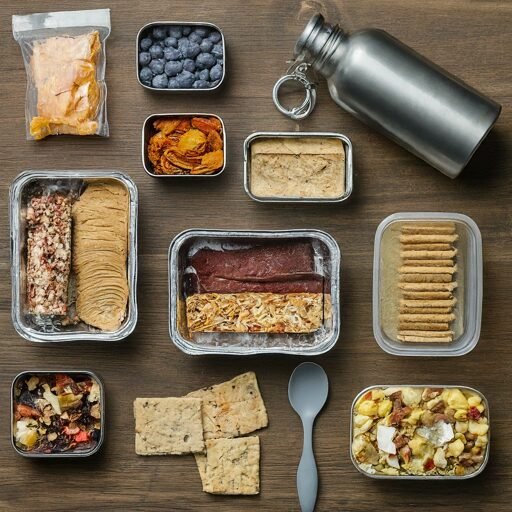
Emergency food supplies should be included in your home emergency kit to sustain you and your family during an emergency.
Non-perishable food items that have a long shelf life, such as canned goods, granola bars, and dehydrated meals, are ideal choices.
Make sure to buy in bulk to save the most money, regularly check, and replenish your food supplies to ensure their freshness.
Include:
- Canned goods: A variety of fruits, vegetables, beans, and meats that have a long shelf life.
- Dry goods: Rice, pasta, lentils, and beans for easy, energy-rich meals.
- Ready-to-eat meals: Freeze-dried or dehydrated meals that only require hot water to prepare.
- Energy bars and protein bars: For quick, nutritious snacks that provide immediate energy.
- Nuts and dried fruits: Offer a good mix of fats, fiber, and nutrients, ideal for snacking.
- Powdered milk or shelf-stable alternatives: To ensure access to vital calcium and vitamin D.
- High-energy foods: Peanut butter, jelly, and trail mix for calorie-dense options.
- Instant coffee and tea bags: To maintain morale and provide a sense of comfort.
- Long-life juice and electrolyte drinks: To maintain hydration and replenish electrolytes.
- Cooking essentials: Salt, sugar, spices, and oil to make meals more palatable.
- Manual can opener: To easily open canned goods without electricity.
- Water: For cooking dehydrated meals and as a vital resource on its own.
- Cooking stove and fuel: A portable option for heating food when electricity is not available.
- Utensils and cookware: Basic set for preparing and eating meals.
First Aid Essentials

A comprehensive first aid kit is a must-have in your home emergency kit. It should include bandages, antiseptics, medications, and other essential items to treat minor injuries and provide immediate medical assistance until professional help arrives.
For a comprehensive first aid response during emergencies, your home emergency kit should include:
- Adhesive bandages: Various sizes for minor cuts and abrasions.
- Sterile gauze pads: For larger wounds.
- Adhesive tape: To secure gauze and bandages.
- Antiseptic wipes: For cleaning wounds and preventing infection.
- Antibiotic ointment: To prevent infection in cuts and scrapes.
- Pain relievers: Such as acetaminophen or ibuprofen.
- Allergy medication: Antihistamines for allergic reactions.
- Tweezers: For removing splinters and debris from wounds.
- Scissors: For cutting tape, gauze, and clothing.
- Disposable gloves: To prevent contamination and infection.
- CPR face shield or mask: For performing CPR safely.
- Elastic bandages: For wrapping sprains and strains.
- Instant cold packs: For reducing swelling and numbing pain.
- Thermal blanket: For maintaining body temperature.
- First aid manual: A guide for treating various emergencies.
- Emergency manuals and guides: Guides and reference materials providing instructions for emergency situations.
- Burn gel or cream: For treating minor burns.
- Eye wash solution: To flush out irritants from the eyes.
- Rehydration salts: For treating dehydration.
- Safety pins: For securing bandages and splints.
- Child care supplies: Items and supplies for caring for infants and children during emergencies.
- A list of emergency phone numbers: Including local emergency services, poison control, and personal emergency contacts.
Power Outage Solutions & Light Sources

Power outages are common during emergencies, so it’s essential to have appropriate backup solutions in your home emergency kit. Items such as flashlights, batteries, and portable chargers can provide light and keep your essential devices powered during power interruptions.
For the overachiever, include:
- Flashlights: Durable, high-lumen flashlights for navigating in the dark.
- LED lanterns: Provide ambient lighting for rooms or campsites.
- Headlamps: Hands-free option for tasks in the dark.
- Extra batteries: A variety of sizes to fit all your devices.
- Battery-powered or hand-crank radio: To stay informed during outages.
- Power banks: Fully charged to keep mobile phones and small electronics powered.
- Solar charger: For recharging devices without electricity.
- Candle lanterns: As a backup light source (use with caution).
- Waterproof matches or lighter: For lighting candles or a stove.
- Portable generator: If feasible, for powering essential appliances.
- Gasoline: Stored safely, for running generators or vehicles.
- Car chargers: For charging devices through a car’s power outlet.
- Manual can opener: To open canned food without electricity.
- Insulated coolers: For keeping perishable food cold during short-term outages.
- Glow sticks: Safe, long-lasting light source for visibility and signaling.
Communication Tools
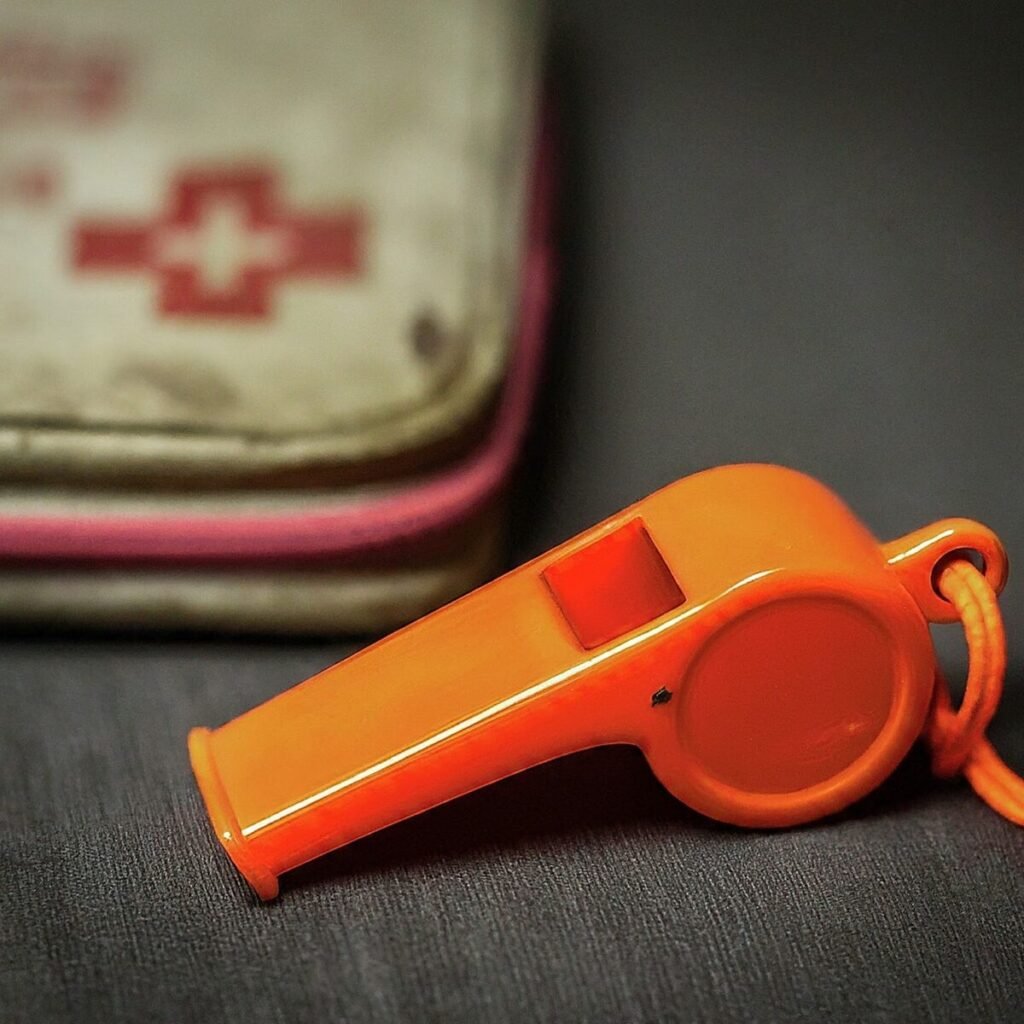
Communication is vital during emergencies, and having the right tools can help you stay connected with your loved ones and emergency services. Include items like a battery-powered radio, a whistle, and a signaling mirror in your home emergency kit.
For effective communication during emergencies, your home emergency kit should include:
- Battery-powered or hand-crank radio: For receiving weather alerts and emergency broadcasts.
- Fully charged power bank: To keep mobile phones and small devices powered.
- Solar charger: For recharging batteries and devices using sunlight.
- Mobile phone with emergency numbers pre-saved: Include local emergency services, family, and friends.
- Whistle: To signal for help if you are trapped or lost.
- Two-way radios (walkie-talkies): For communication within a group if cell service is down.
- Waterproof, durable case: To protect your communication tools from damage.
- Flashlight with extra batteries: For signaling in the dark.
- Signal mirror: For signaling rescuers during daylight.
- Flares: To signal for help from a distance.
- Pen and waterproof notepad: For leaving messages or keeping track of important information.
- Backup batteries: For all battery-operated devices.
- Emergency contact list: Printed list of important phone numbers and addresses.
- Satellite phone: For communication in areas without mobile phone coverage (if feasible).
Personal Hygiene Kits
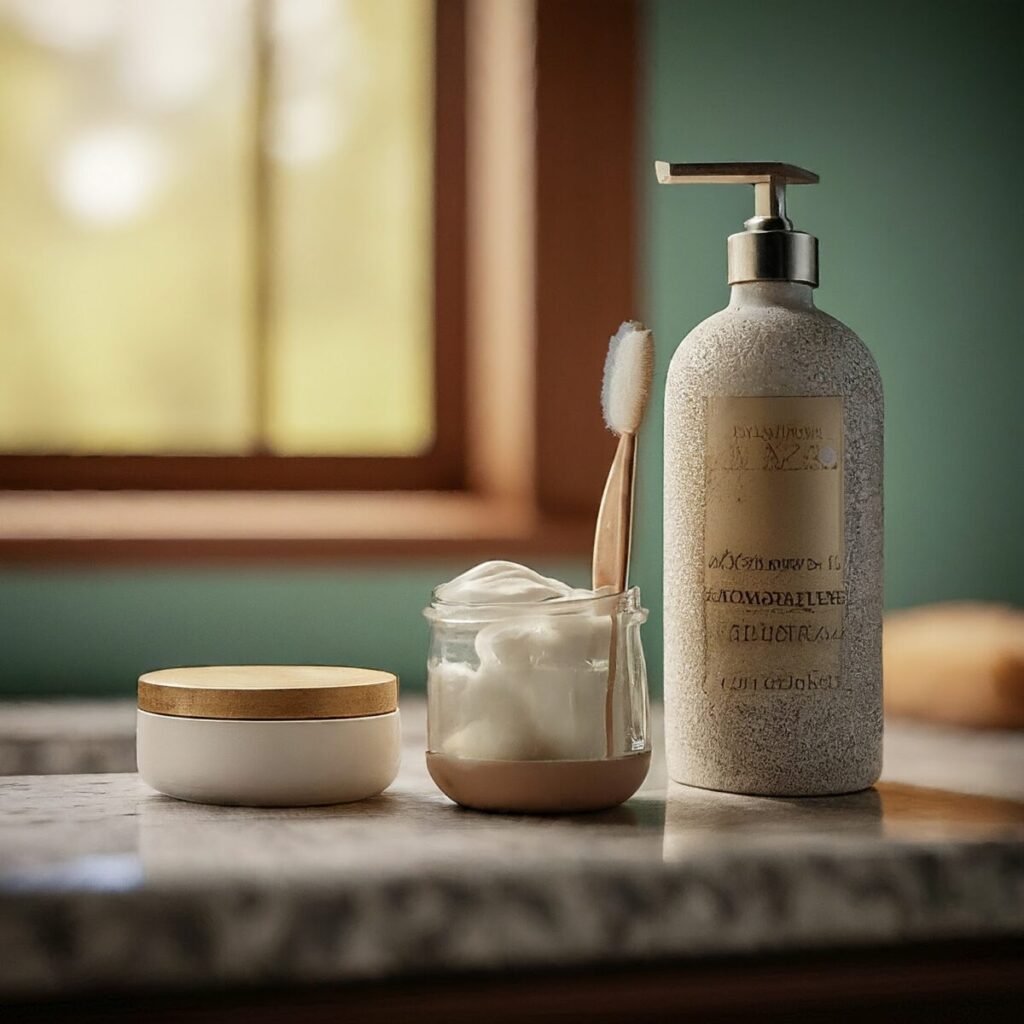
Maintaining personal hygiene is essential, even during emergencies. Include personal hygiene items such as wet wipes, hand sanitizer, toilet paper, and soap in your home emergency kit to ensure cleanliness and sanitation.
Consider also purchasing a portable toilet as a backup option as well.
For a longer list, see the Hygiene and Sanitation section of this article.
Car Emergency Kits

Car emergency kits are essential for preparedness while on the road. These kits should include basic tools and supplies, signaling devices, navigation tools, and spare clothing and footwear.
Basic Tools and Supplies
A well-equipped car emergency kit should include the following basic tools and supplies:
- Tire repair kit: A tire repair kit can help fix flat tires and get you back on the road quickly.
- Jumper cables: Jumper cables are essential for jump-starting a dead battery.
- Multi-tool: A multi-tool can serve multiple purposes and includes tools like pliers, a knife, screwdrivers, and more.
- Flashlight: A flashlight is crucial for illuminating dark areas and checking your vehicle.
These tools can help you address common car issues and handle minor repairs, ensuring that you’re not stranded in the event of a breakdown.
Signaling Devices
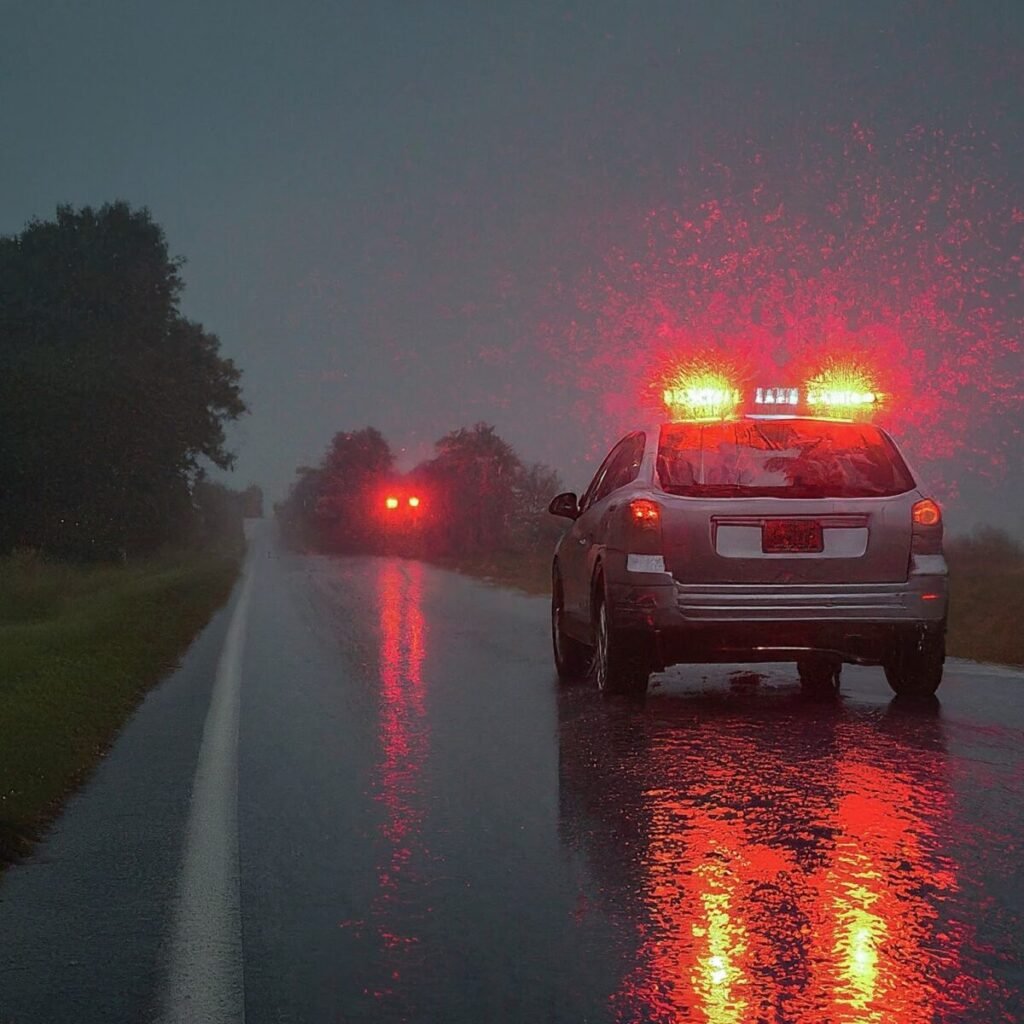
Signaling devices are vital in emergencies to attract attention and alert others to your presence. Include:
- Flares: Flares can be used to indicate that you need help or to warn other drivers of your presence.
- Reflective triangles: Reflective triangles are highly visible and can be placed behind your vehicle to increase visibility.
These signaling devices are particularly useful when stranded on the side of the road or during nighttime emergencies.
Navigation Tools
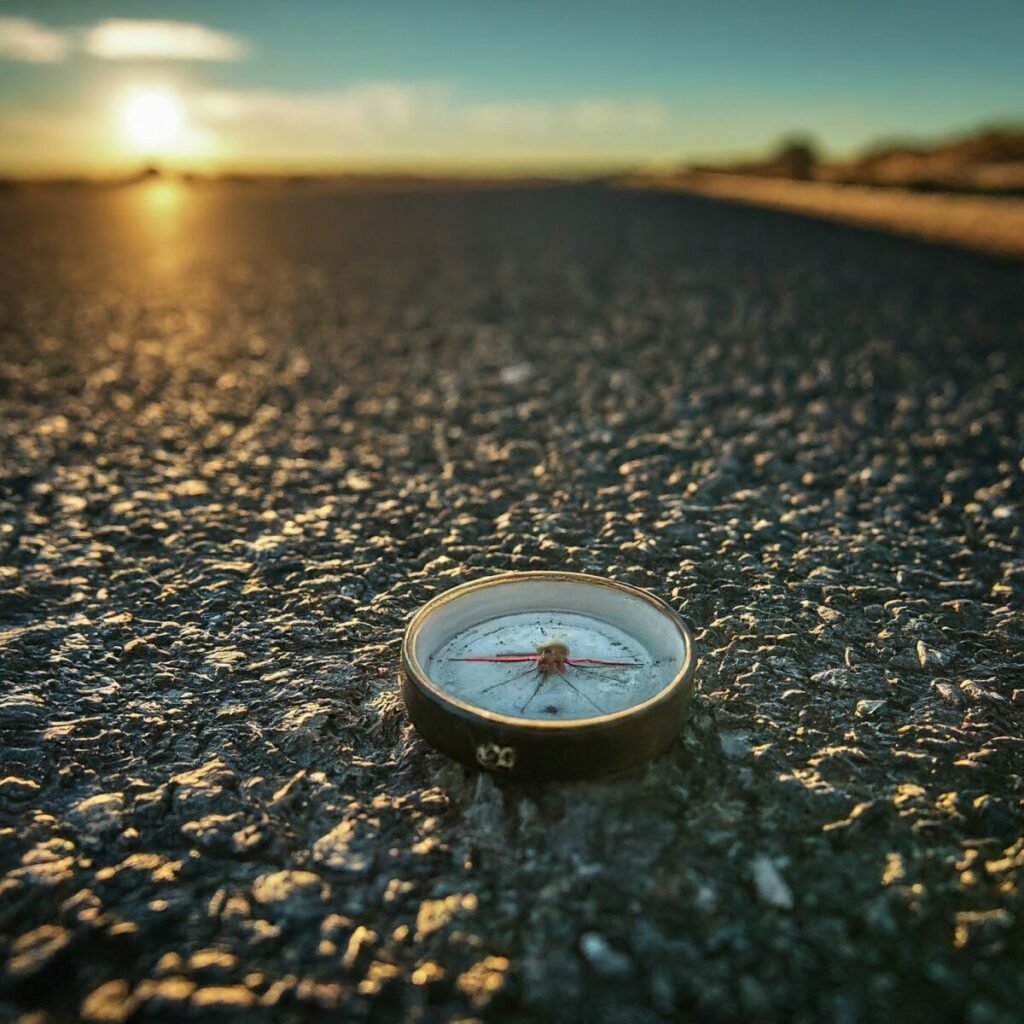
In case you become disoriented, having navigation tools can help you find your way:
- Compass: A compass can help you determine your direction and navigate unfamiliar territory.
- GPS device: A GPS device provides precise navigation instructions and can help you find the nearest gas station, hospital, or other important locations.
These tools are especially useful when traveling in remote or unfamiliar areas.
Spare Clothing and Footwear
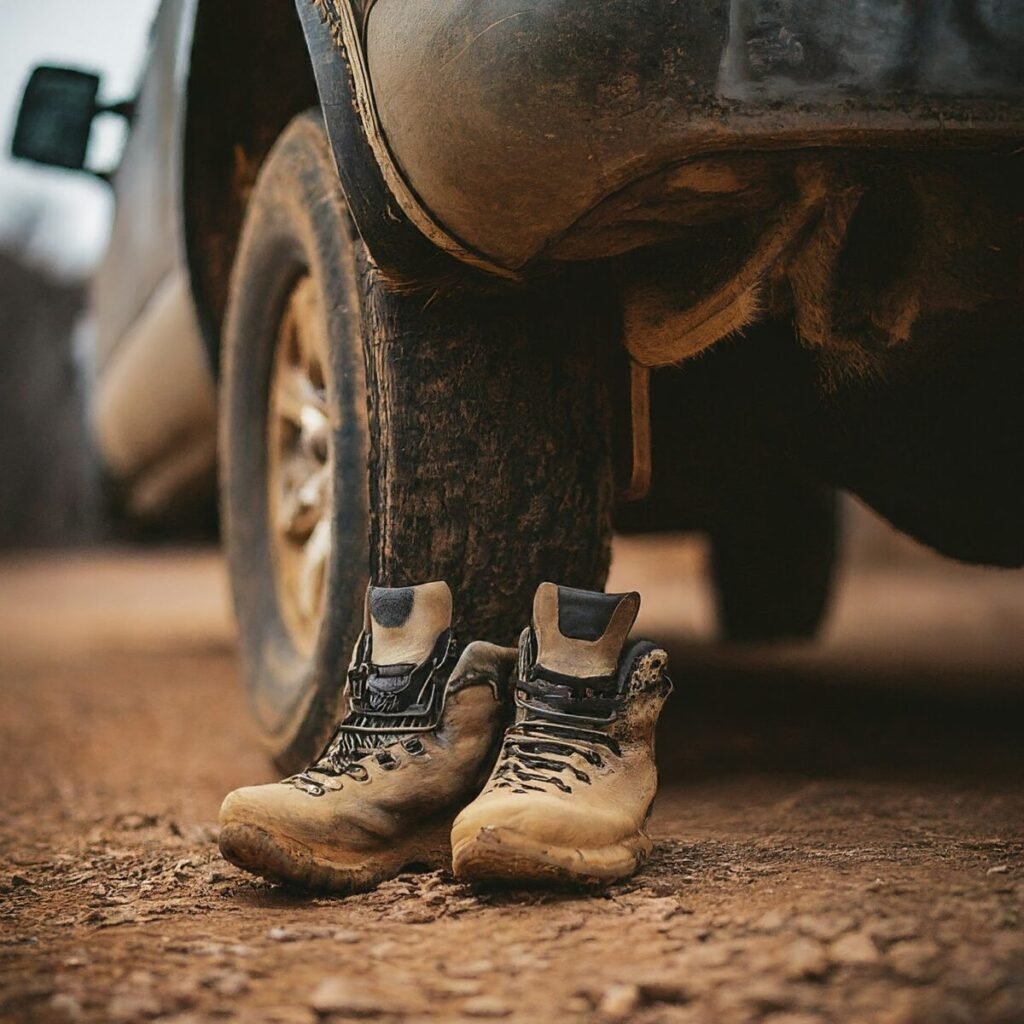
Include spare clothing and footwear in your car emergency kit to ensure your comfort and safety:
- Extra layers: Pack warm clothing such as jackets, hats, and gloves in case of cold weather.
- Comfortable shoes: Have a pair of sturdy, closed-toe shoes in case you need to leave your vehicle and walk to safety.
Having spare clothing and footwear can provide protection against changing weather conditions or emergencies that require leaving your vehicle.
Wilderness Survival Kits
To ensure utmost safety, you should invest in high-quality outdoor survival gear and equip yourself with emergency survival supplies.
You should ensure that your wilderness survival kit includes the following items.
These items will keep you well-prepared and capable of facing any challenges that may arise.
When you assemble your personal wilderness survival kit, you should prioritize compactness and portability. Your kit should contain essential items that are specifically designed for short-duration emergencies.
A few tips to remember when planning your kit:
- Navigation Tools: Carry a map and compass or GPS device to aid in orienteering and finding your way in unfamiliar terrain.
- Fire-Starting Tools: Equip yourself with reliable tools such as waterproof matches, lighters, or fire starters to quickly create warmth, light, and signaling smoke when needed.
- Signaling Items: Include signaling devices such as whistles, mirrors, or flares to attract attention and communicate your location in case of emergencies.
- Rope and bungee cords: Strong and versatile cords for various tasks including securing, lifting, and climbing.
- Water Purification System: Pack a compact and effective water purification system, such as portable water filters or purifying tablets, as a reliable source of safe drinking water may not always be available.
- Fishing Gear: Consider carrying compact fishing gear, such as a fishing line with hooks and bait, to provide an additional source of food in case of extended stays or emergencies.
- Basic First Aid Items: Include essential first aid supplies such as bandages, antiseptic wipes, pain relievers, and any necessary personal medications to address minor injuries and illnesses.
- Knife: Keep a versatile and sturdy knife as a multi-purpose tool for tasks like cutting, preparing food, or crafting emergency shelters.
- Prepping Library: Prepare completely by building and learning from a survival preparedness library of resources.
While wilderness survival kits primarily cater to outdoor adventures, it’s equally important to prepare for urban disasters.
In this regard, establish a grab bag of essential items ready for evacuation.
This bag should include food supplies, water, first aid supplies, communication devices, copies of essential documents, and other crucial items that can sustain you during a crisis.
Customizing your survival kit based on the number of people, potential emergencies, location, experience level, and expected wait time for help is essential.
Remember to conveniently pack your wilderness survival kit, placing bulky items at the bottom and frequently used tools on top for easy access.
To ensure your wilderness survival kit remains reliable, inspect and repack it regularly. Replace any expired or damaged items and keep all components in good condition.
In the market, you can find different types of survival kits catering to various needs. Mini survival kits are designed for short-term emergencies, whereas 72-hour bug-out bags are intended for longer evacuations.
Investing in a well-equipped wilderness survival kit and diligently maintaining it enhances your safety and practicality in the great outdoors.
Remember, being prepared today can make all the difference tomorrow.
Pet Emergency Kits

Pet emergency kits are important to ensure the safety and well-being of your furry friends during emergencies.
Make sure to include the following:
Food and Water Supplies
These kits should include food and water supplies that are specifically tailored to meet the nutritional and hydration needs of your pets.
Including an ample supply of pet-specific nutrition and hydration essentials will help keep your pets nourished and hydrated during emergency situations when regular access to food and water may be limited or unavailable.
Care and Comfort Items
In addition to food and water supplies, it’s essential to include care and comfort items in your pet emergency kits. These items are designed to provide comfort and reduce stress for your pets during challenging times.
Care and comfort items may include bedding, toys, and familiar items that your pets are accustomed to. Having these items on hand can help create a sense of familiarity and security for your pets in unfamiliar or stressful situations.
Medication and First Aid
Just like humans, pets may require medication and first aid in emergency situations. It’s crucial to include these supplies in your pet emergency kits to address any medical needs or emergencies that may arise with your pets.
Medication and first aid supplies for your pets may include items such as prescribed medication, bandages, antiseptics, and other supplies necessary for treating injuries or addressing specific medical conditions.
Disaster-Specific Kits
Disaster-specific kits are essential for addressing the unique needs of different types of disasters, including earthquakes, hurricanes, and floods. These kits are specifically tailored to contain items that are specific to the predicted conditions and challenges of each disaster scenario.
Earthquake Kits
Earthquake kits are crucial for preparing for the impact of seismic activity. These kits should include items such as sturdy shoes and gloves to protect against potential structural damage. Additionally, emergency supplies such as non-perishable food, water, flashlights, and emergency blankets should be included to ensure survival during an earthquake.
Hurricane Kits
Hurricane kits are designed to meet the specific needs of individuals living in hurricane-prone areas. These kits should contain items such as hurricane shutters and storm-proof windows to protect against strong winds. It is also important to include supplies to address potential power outages and flooding, such as portable generators, batteries, and waterproof containers to safeguard essential documents and supplies.
Flood Kits
Flood kits are indispensable for mitigating the impact of flooding events. These kits should include items such as sandbags to divert and prevent water from entering buildings. Waterproof containers are necessary to protect important documents and supplies from water damage. It is also crucial to include emergency supplies, such as non-perishable food, water, garbage bags for waterproof storage, and first aid kits, to withstand the challenges posed by flooding.
Essential Tools and Supplies
When it comes to emergency situations, having the right tools and supplies can make all the difference. In order to address immediate needs, it is essential to have a well-stocked emergency kit.
This kit should include a variety of items that cover different aspects of emergency preparedness.
First Aid Essentials
One of the most important components of any emergency kit is a comprehensive first aid kit. It should include bandages, antiseptics, medications, and other essential items necessary for treating injuries. Having these supplies readily available can help prevent further complications and provide immediate relief in the event of an accident or medical emergency.
Power and Light
During emergencies, access to power and light sources is crucial. Flashlights and batteries should be included in your emergency kit to provide essential illumination in the dark. Additionally, considering alternative power options such as generators or portable power banks can ensure you have access to electricity when the grid is down.
Communication and Information
Staying connected and informed during emergencies is vital. Including communication tools such as a battery-powered radio, mobile phones, and access to emergency broadcasts can help you stay updated on the latest information and receive important instructions from authorities.
Hygiene and Sanitation
Maintaining hygiene and sanitation is crucial during emergencies to prevent the spread of diseases. Your emergency kit should include items such as hand sanitizer, toiletries, and cleaning products to ensure you can maintain cleanliness and sanitation during challenging times.
Consider what other items on this list may be essential preps:
- Hand sanitizer: For cleaning hands when soap and water aren’t available.
- Soap: Bars or liquid soap for thorough hand and body washing.
- Wet wipes: For personal hygiene and cleaning surfaces.
- Toilet paper: Essential for sanitation needs.
- Feminine hygiene products: Tampons, pads, or menstrual cups.
- Dental hygiene items: Toothbrush, toothpaste, and dental floss.
- Deodorant: To help feel fresh during extended periods without a shower.
- Shampoo and conditioner: Small, travel-sized bottles.
- Disposable razors: For shaving and personal grooming.
- Plastic bags: For waste disposal and waterproofing important items.
- Portable toilet: In case of water supply disruption or if plumbing isn’t functional.
- Baby supplies: Diapers, baby wipes, and rash ointment if you have an infant.
- Towels and washcloths: For drying after washing or bathing.
- Nail clippers: For personal grooming and maintaining cleanliness.
- Insect repellent: To prevent bug bites and related diseases.
- Sunscreen: To protect skin from sunburn during outdoor exposure.
- Moisturizer: To prevent dry skin, especially in harsh conditions.
- Water purification tablets or devices: To ensure water used for hygiene is clean.
- Biodegradable soap: For environmentally friendly cleaning if outdoors.
- Personal protective equipment (PPE): Air filtration masks and gloves to prevent disease transmission.
By including these essential tools and supplies in your emergency kit, you can be better prepared for various emergency situations and address immediate needs effectively.
Specialized Equipment and Supplies
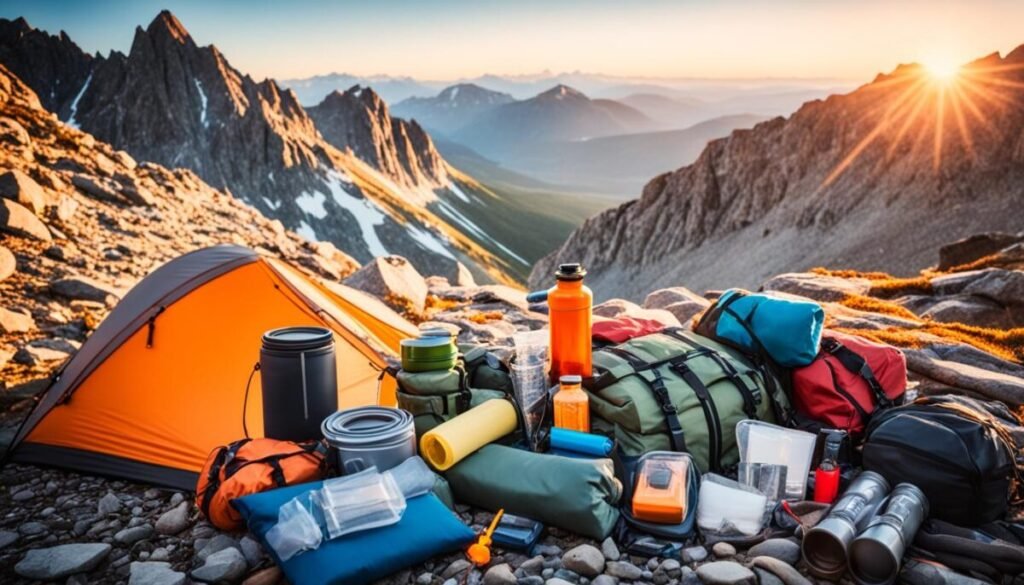
Specialized equipment and supplies play a crucial role in providing additional support and assistance during emergencies.
It is essential to include the following items in your emergency kit:
Thermal Blankets and Emergency Shelter
Thermal blankets and emergency shelter are crucial for providing warmth and protection in challenging conditions. They help regulate body temperature and prevent hypothermia in cold weather. Thermal blankets are lightweight and easy to pack, making them a practical solution for emergency situations. Additionally, having emergency shelter options like tents or tarps can provide a secure and comfortable space during extended periods of displacement.
By including water purification systems, emergency food supplies, and thermal blankets and emergency shelter in your specialized equipment and supplies, you can enhance your preparedness and ensure your safety during emergencies.
Personal Safety and Comfort
In times of emergencies, ensuring personal safety and comfort should be paramount. Taking steps to protect oneself and maintain a sense of well-being can help mitigate the stress and challenges that arise during such situations. Below are some key items that should be included in your emergency kit to prioritize personal safety and comfort:
1. Personal Protective Equipment (PPE)
Having appropriate personal protective equipment is crucial for personal safety. This may include items such as:
- Face masks
- Gloves
- Goggles or safety glasses
- Respirators or dust masks
2. Clothing
Include extra clothing suitable for the weather conditions, such as:
- Warm layers for cold weather
- Lightweight and breathable clothing for hot weather
- Rain gear or waterproof clothing
- See a more complete list in the Lightweight Breathable Clothing section.
3. Bedding
Having bedding items can help provide comfort during extended periods of emergency situations. Consider including:
- Sleeping bags or blankets
- Pillows
- Air mattresses or sleeping mats
4. Comfort Items
To alleviate stress and promote emotional well-being, include items that bring comfort, such as:
- A favorite book or magazine
- A deck of cards or board games
- A stuffed animal or comforting item
Navigation and Emergency Signaling
Navigation and emergency signaling tools are essential for communication, direction finding, and attracting attention during emergencies. This section covers items such as maps, compasses, GPS devices, and signaling devices.
Maps and Compasses
Maps and compasses play a crucial role in navigating through unfamiliar terrain or establishing your position during emergencies. Maps provide a visual representation of the surrounding area, helping you plan your route or find landmarks. Compasses, on the other hand, enable you to determine direction accurately by using the Earth’s magnetic field. Both tools work together to assist in orienteering and making informed decisions based on your surroundings.
GPS Devices
GPS (Global Positioning System) devices provide accurate position tracking using signals received from satellites. These portable devices are equipped with mapping features and can display real-time navigational information, making them invaluable tools for precise location identification, route planning, and wayfinding. GPS devices can also track speed, distance, elevation, and other useful metrics, enhancing your situational awareness and safety during emergencies.
Signaling Devices
Signaling devices are essential for attracting attention and requesting assistance during emergencies when verbal communication may not be possible. These devices include whistles, flares, signal mirrors, and personal locator beacons (PLBs). Whistles produce loud, high-pitched sounds that can carry over long distances. Flares and signal mirrors create bright, visible signals that can be seen from afar. PLBs emit distress signals to search and rescue authorities, providing your precise location for faster response and assistance.
| Navigation and Emergency Signaling | Key Features |
|---|---|
| Maps and Compasses |
|
| GPS Devices |
|
| Signaling Devices |
|
Repair and Maintenance Tools
Repair and maintenance tools are crucial for addressing damaged equipment and infrastructure during emergencies. These tools enable you to quickly fix and maintain essential items, ensuring you can effectively respond to any emergency situation that arises.
Multi-tools and Survival Knives
Multi-tools and survival knives are versatile and portable tools that play a vital role in emergency preparedness. They are equipped with various functions and features, such as blades, screwdrivers, pliers, and can openers, allowing you to tackle a wide range of repair and maintenance tasks. Their compact size makes them easy to carry and access in emergency situations, making them an essential addition to any emergency kit.
Sewing Kits
Sewing kits are valuable for repairing clothing and gear that may get damaged during emergencies. These kits typically include a selection of needles, thread, buttons, and other sewing accessories. With a sewing kit, you can mend torn clothing, replace broken straps, and patch up equipment, ensuring that they remain functional and usable throughout the emergency situation.
Duct Tape and Safety Pins
Duct tape and safety pins are indispensable repair tools that offer quick and temporary solutions for various emergency situations. Duct tape is a multipurpose adhesive that can be used to secure, fortify, and repair damaged items. It can be used to patch up tears, seal leaks, and create makeshift repairs. Safety pins, on the other hand, provide temporary fixes for clothing, gear, and other items. They can secure loose fabrics, replace broken closures, and hold things together when traditional fasteners are unavailable.
Overall, having repair and maintenance tools like multi-tools, survival knives, sewing kits, duct tape, and safety pins in your emergency kit can greatly enhance your ability to address and overcome unexpected challenges during emergencies.
Additional Essentials for Preparedness
When it comes to emergency preparedness, it’s important to cover all the bases. In addition to the essential items we’ve already discussed, there are a few other items that may not fit neatly into specific categories but are still crucial in emergency situations. These additional essentials can provide peace of mind and extra support during challenging times.
Cash and Copies of Important Documents
Having cash on hand is essential during emergencies when electronic payment systems may be down or inaccessible. It’s recommended to keep a small amount of cash in your emergency kit to cover immediate expenses like food, transportation, or supplies. Additionally, having copies of important documents such as identification, insurance policies, and contact information can be invaluable in emergency situations where access to personal records is limited.
Waterproof Storage Solutions
To protect valuable items from water damage, it’s essential to have waterproof storage solutions in your emergency kit. These can include waterproof bags, containers, or pouches that will keep important documents, electronics, or other sensitive items safe and dry. Waterproof storage solutions provide an extra layer of protection against the elements and ensure the longevity of essential items.
Prescription and Over-the-Counter Medication
For individuals who rely on medication to manage chronic conditions or address acute health needs, it’s crucial to include an ample supply of prescription and over-the-counter medication in your emergency kit. Make sure to rotate medication regularly to ensure it remains within expiration dates. Having the necessary medication on hand can help maintain health and well-being during emergencies when accessing medical facilities may be challenging.
Remember, additional essentials for preparedness cover items that may not fit within specific categories but are still important for emergency situations. Cash and copies of important documents provide access to necessary resources, waterproof storage solutions protect valuable items, and prescription and over-the-counter medication ensure medical needs are met during emergencies.
To help illustrate the importance of these additional essentials, let’s take a closer look at a table that summarizes the key items and their significance in emergency preparedness.
| Essential Items | Significance |
|---|---|
| Cash and Copies of Important Documents | Provides immediate access to funds and necessary identification during emergencies. |
| Waterproof Storage Solutions | Protects valuable items from water damage and ensures their longevity. |
| Prescription and Over-the-Counter Medication | Meets medical needs by having a sufficient supply of necessary medication on hand. |
Special Considerations for Various Scenarios
Insect Repellent and Sun Protection
Special considerations for various scenarios cover additional items that may be necessary based on specific factors such as insects, sun exposure, and other environmental challenges. This section includes items such as insect repellent and sun protection.
Insect repellent is an essential item to protect against bug bites and related infections in outdoor settings. It helps repel mosquitoes, ticks, flies, and other biting insects that can transmit diseases.
Applying insect repellent to exposed skin and clothing can significantly reduce the risk of insect-related health issues.
Sun protection is crucial to prevent sunburn and skin damage, especially during extended periods of sun exposure in emergency SHTF situations.
Sunscreen with a high SPF (Sun Protection Factor) should be applied to all exposed skin to block harmful UV (Ultraviolet) rays. Additionally, wearing protective clothing, such as hats and sunglasses, can provide further protection against the sun’s harmful effects.
Lightweight, Breathable Clothing
For ensuring comfort and adaptability in various emergency scenarios, your home emergency kit should include:
- Lightweight long-sleeve shirts: To protect against the sun and insects while allowing air circulation.
- Breathable pants: Quick-drying materials that offer protection and comfort.
- Moisture-wicking underwear: To keep you dry and comfortable.
- Lightweight socks: Preferably moisture-wicking to keep feet dry and prevent blisters.
- A wide-brimmed hat: For sun protection and cooling.
- A lightweight rain jacket: Waterproof and breathable for protection against rain.
- A fleece or light jacket: For layering during cooler temperatures.
- Bandanas or buffs: Versatile for headwear, neck protection, or dampening for cooling.
- Gloves: Lightweight for protection against cold or rough terrain.
- Sun-protective clothing: Fabrics rated with UPF protection to reduce sun exposure.
| Insect Repellent | Sun Protection |
|---|---|
|
|
Conclusion
Key Takeaways for Building Emergency Kits
In conclusion, building an emergency kit is crucial for preparedness in various emergency situations. It is important to consider the specific needs of your household and include essential supplies for different scenarios. Prioritizing personal safety and comfort should always be at the top of your list when assembling an emergency kit. Additionally, regularly maintaining and updating your kit is essential to ensure that all items are in good working condition and have not expired.
By following these guidelines and including the necessary items, you can ensure your safety and survival during emergencies. Remember to include water purification systems, emergency food supplies, first aid essentials, power and light sources, communication and information tools, personal hygiene kits, as well as specialized equipment and supplies that cater to specific disaster scenarios. It is also important to consider personal factors such as pet emergency kits, special considerations for various scenarios like insect repellent and sun protection, and additional essentials like cash and copies of important documents.
Building an emergency kit requires careful planning and thoughtful consideration of the potential challenges you may face in an emergency. By taking these key takeaways into account, you can be well-prepared for unexpected events and have peace of mind knowing that you have the necessary supplies to weather any storm.


